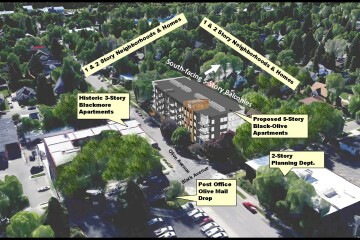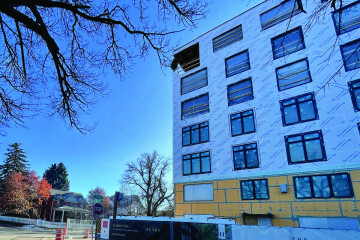What's Your Beef? We Need Six-Month Moratorium On New Growth
At this moment in the life of our community, I don’t think anybody believes anymore that Bozeman is Utopia. Since its inception, Bozeman has marketed itself to the rest of the world as an antidote to reality, a Last Best Place in which to live, to work, to raise a family, and to spend time in nature. The promise of Bozeman has been no less than The Chance to Live the Good Life.
I am not suggesting this promise is now broken, or worse, that it has always been more an illusion than a reality; I am not writing to destroy beautiful images and feelings that residents might still maintain in their personal connection to our city. I am a lover and supporter of Bozeman, even though many of my longtime friends believe that the Bozeman we grew up in has disappeared with no return. One friend uses the acronym “BID” by his name when he signs-off in emails. It means “Bozeman Is Dead.”
It is tempting to attribute the loss of the Last Best Bozeman to population growth. Some people claim that more is worse, and that smallness and simplicity are the best supports for the good life. I reject this idea, because I have visited numerous large cities and have witnessed firsthand the vibrancy of their neighborhoods and the love residents feel for these places. A daughter of mine enjoys good friendships, excellent work, supportive neighbors, and personal safety in her Brooklyn, NY neighborhood.
But something essential about Bozeman has changed; it’s as though some invisible but consequential line in our community life has been crossed, and in crossing it, Bozeman’s former sense of community has been irreparably diminished. Moving around our city, you can feel what it’s like on the other side of the line. You see it in the nondescript, over-sized, for-rent housing projects squatting like space aliens in historic neighborhoods, in former grain fields, in the gravel mine by the airport. You can feel it in the growing numbers of exhausted, un-housed people, many employed, camping on the streets. You can see it in the $1.5 million price tags for two-bedroom units in the latest Holloran building.
As the big-dollar housing industry has increased its presence here, poverty and homelessness have increased at the same time, and the industry itself is the likely cause. City leaders, people of good faith and intentions, try their best to manage the situation, yet their efforts to bring down housing costs have made them captives to this industry, and the result has been a steady increase in the cost of living and the weakening of our community life.
The more leaders follow the strategy of trying to build, build, build our way to a more affordable Bozeman, the more they convert residents into strangers in a strange land, left holding the bag for a new city they don’t want. Despite leaders’ efforts, the cost of new housing in Bozeman remains highest in the state, and the costs to residents who pay for their leaders’ “solution” also go up, through new assessments and increased fees. Everyone who has ever made an honest study of the cost of growth has concluded that it does not pay for itself.
In this light, when Bozeman city leaders tell us (as they have done) to conserve water or pay fines for over-use, citizens rightly suspect leaders are not protecting a precious resource. Instead, we suspect they ration our diminishing water supply so developers can use it to feed new growth without having to pay to find it, extract it, and convey it from new sources. This kind of water rationing—not based in sustainability, but its opposite—is another way that citizens become strangers in their own city.
Is there a way out of this? Are there better policies for managing growth? Yes. But to get to these new policies, we have to stop doing what we are doing now—and stopping seems too bold and too risky for most people. But to reflect and chart a new course, we must first stop. We need to stop. We need a moratorium on new development—a six-month period of time in which the city declines to see new development proposals.
During the six-month long moratorium on new growth, the city could reach out to residents, ask them their opinions, find out what they want for themselves, their families, and their community. No good work is done in a hurry. Therefore, the city needs to pause. During the pause, the length of thoughts about the future can increase. The voices of the community can blend and amplify. A new path to the future can evolve—and maybe, a new sense of community can be found.
I urge you to support candidates for city leadership who have new views. And new vision. And the courage to pursue these.



